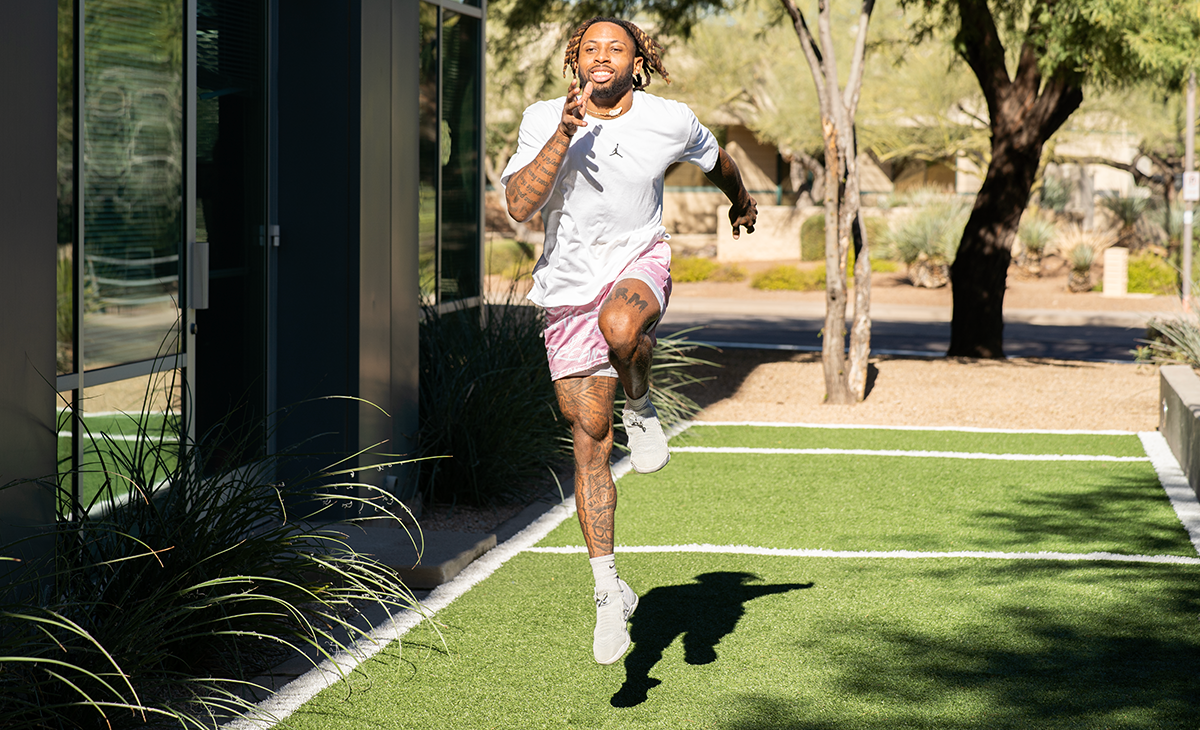By: Brian Schulte, CSCS, FAFS, FIT Coordinator
In sports, your vertical jump can be the deciding factor between a win and a loss. It can differentiate whether or not you secure that rebound, block that volleyball spike, or come down with that last second hail-mary. Furthermore, having a good vertical jump is often correlated with several other aspects of athletic ability such as acceleration, change of direction, and overall power. There’s a reason why the NFL combine tests draft prospects on their vertical. They’re not just measuring how high you can jump, they’re measuring your athleticism.
In order to find out the best ways to improve our vertical jump and gain that competitive edge, we reached out to Brian at Spooner Scottsdale.
“When you look at a lot of the traditional vertical jump testing and training, you’ll notice that everything is facing the same direction, forwards. However, look at most athletes when they are jumping in-game. They are rotating their hips, jumping sideways, and going through various types of movements pre and post jumping. Our athletes should be training in ways that are functional to their sport and incorporates movement in all 3 planes,” Brian explains.
Brian helps lay out an exercise regime designed to step up our jumping ability while maintaining that element of functionality so the workouts we do are reflecting the kinds of movements we’ll be performing in our sport(s).
Lace up, put on your game face, and let’s jump to it!
½ Kneel to Single-Leg Hop
Improves single leg balance and coordination while strengthening all the muscles required to extend the legs and jump. Begin with keeping your foot planted on the ground as you extend up, and then incorporate a jump once you’re more comfortable with the movement.
Drop Squats with Posterior Arm Throws
Works on reactive landing. Throwing the arms behind aids in driving your hips drop down, as well as prepares you to be able to propel your hands in the air as you jump.
Broad Jump to High Jump
This is less about the distance of your broad jump, and more about how well you can transition from jumping horizontally, planting the feet, and exploding upward. As Brian highlights, “Very rarely are you going be jumping straight up without having some sort of forward motion that proceeds it.”
Lateral Bound to Jump
Being able to absorb and produce force whilst moving side-to-side is crucial for most athletes. This exercise has two variants:
- Gathering with both feet and then jumping
- Landing and jumping on a single leg
180º Jumps
Designed to improve jumping and landing coordination. Drive the arms effectively to aid in your rotation and overall height.
Back Leg Elevated Single-Leg Jumps
Challenges single-leg balance, coordination, and strength. Start with keeping your foot planted on the ground as you extend your leg, and then incorporate the jump once you’re comfortable with the movement.
Tuck Jumps
Improves the explosive power of your quads and muscles that extend the hips. Tucking the knees up towards your chest provides the added bonus of engaging your hip flexors and strengthening your core.
Mountain Climbers
Trains the mobility, strength, and coordination of your hips and core. Also, provides a good challenge for your cardio!
A good mountain climber progression involves incorporating a jump (burpee) into the series.
Jump Rope
Perform in 3 different directions, across all planes:
- Forwards and backwards
- Side to side
- Rotating your hips
Single-Leg Leg Press
This exercise mainly targets and builds your quad muscles, which can help your explosive power. It also recruits your glutes and hamstrings for added support.
If you made it through, congratulations!! You’re on your way to becoming a better, more powerful, and more explosive athlete. These exercises are designed to push your body and challenge you physically, so make sure you’re taking care of yourself afterwards to allow for a full recovery. For more tips on that, read “What Should My Post-Workout Recovery Look Like?“.
Furthermore, if you or your athlete is experiencing any sort of pain or discomfort beyond the normal soreness felt after working out, please don’t hesitate to schedule an appointment with a member of the Spooner team. Too often, athletes will try to push through pain or discomfort, when it could be an indication of a movement deficiency that can cause further problems if left untreated. So, don’t risk it!
If you or your athlete have any questions or concerns, or is looking for more training and programing catered to your specific needs, our team of movement specialists are here to help! Schedule an appointment or free assessment today.

